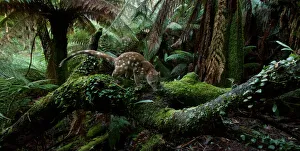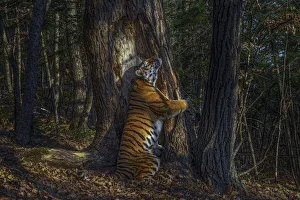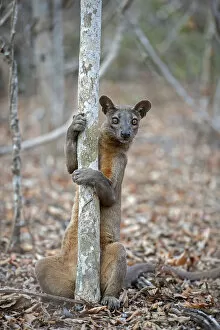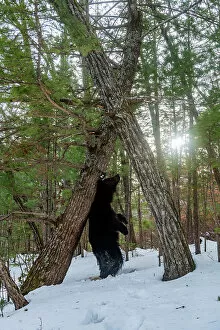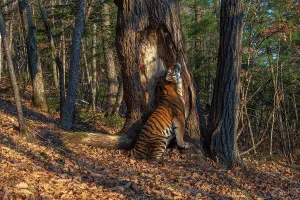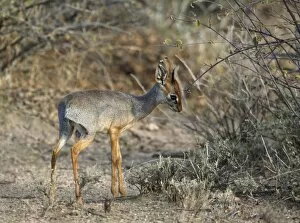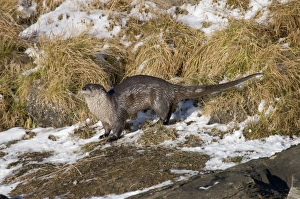Scent Marking Collection
"Scent Marking: A Fascinating Behavior in the Animal Kingdom" Siberian tigers, like this female Panthera tigris altaica
All Professionally Made to Order for Quick Shipping
"Scent Marking: A Fascinating Behavior in the Animal Kingdom" Siberian tigers, like this female Panthera tigris altaica, have a unique way of marking their territory by rubbing their cheeks against trees. This territorial marking not only leaves behind their scent but also serves as a visual signpost for other tigers. In Monga National Park, New South Wales, the spotted-tailed quoll (Dasyurus maculatus) engages in scent marking to communicate its presence and establish dominance within its habitat. These small marsupials leave behind distinct scents that act as a warning to potential rivals. The Asian black bear (Ursus thibetanus) also employs scent marking techniques by rubbing its back on trees. In Land of the Leopard National Park, Russian Far East, these bears use remote cameras to capture images of themselves leaving their mark on the environment during December. Not just limited to tree rubbing, Siberian tigers are known for sitting and rubbing their bodies against trees in forests throughout Land of the Leopard National Park. This behavior is crucial for maintaining social hierarchies among these endangered creatures and ensuring successful communication within their population. Lions (Panthera leo), too, participate in scent marking rituals at dawn along the Ngorongoro Conservation Area / Serengeti National Park boundary in northern Tanzania. Males engage in this behavior to assert dominance over territories and attract potential mates. Traveling all the way to Kirindy Forest in Madagascar brings us face-to-face with fosa (Cryptoprocta ferox), where males mark territories onto mating trees using powerful scents. These markings serve as an advertisement for females seeking suitable partners during breeding seasons. Returning once again to Land of the Leopard National Park's Russian Far East region reveals more Asian black bears engaging in scent marking behaviors during August. By rubbing canker-infested backs against trees, they create distinctive marks while also relieving themselves of discomfort caused by the condition.

